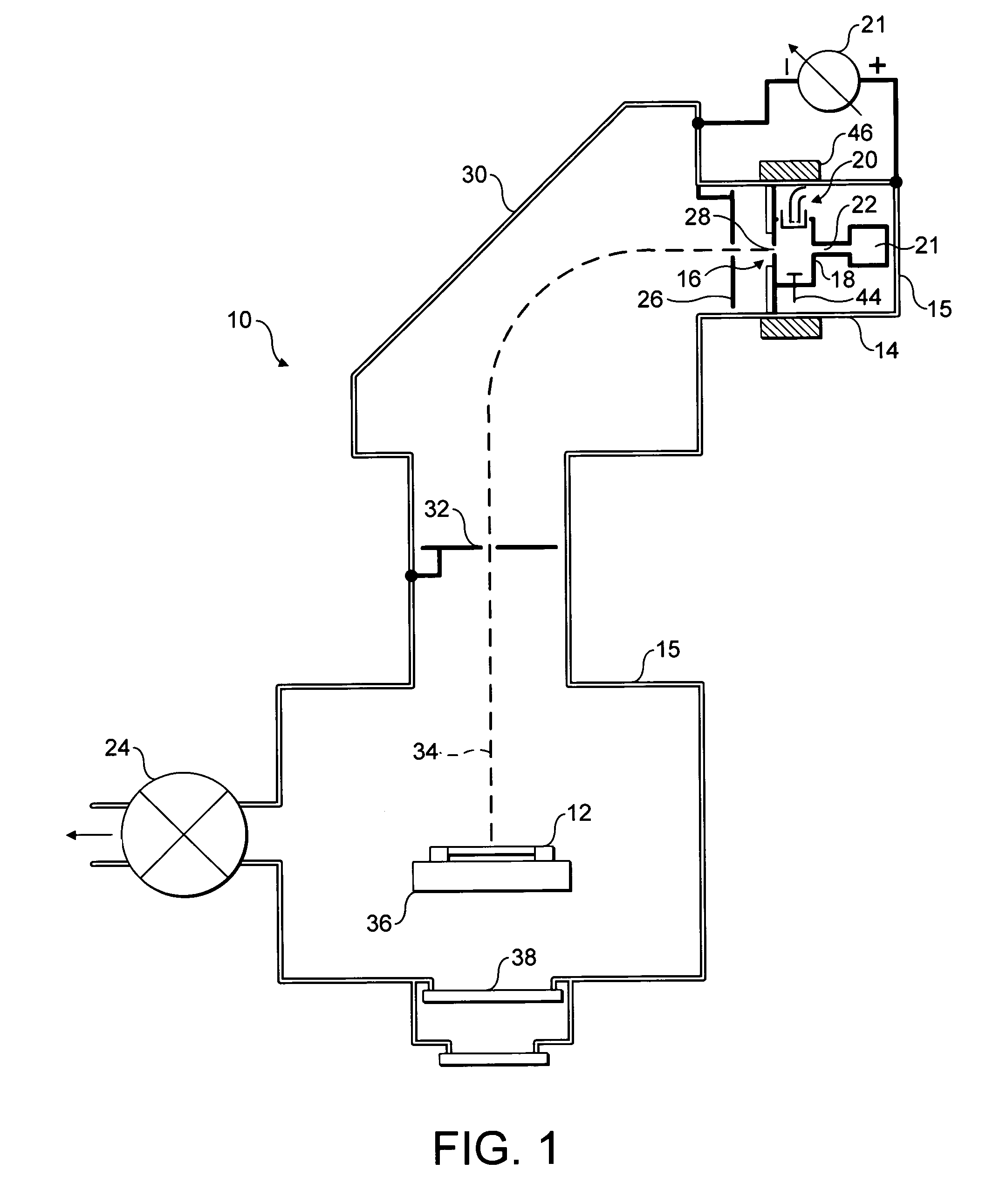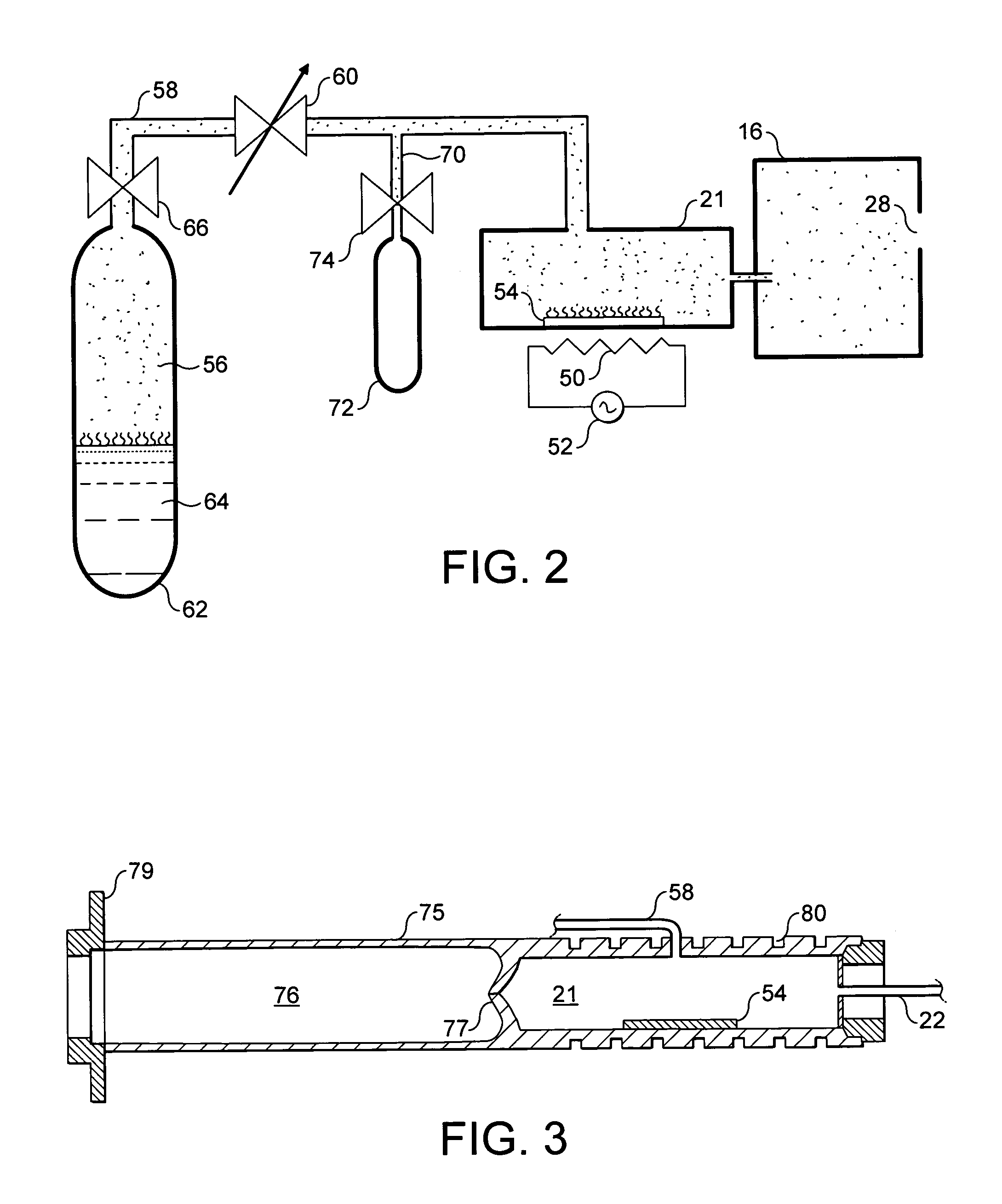Method of producing a dopant gas species
- Summary
- Abstract
- Description
- Claims
- Application Information
AI Technical Summary
Benefits of technology
Problems solved by technology
Method used
Image
Examples
example
[0054]By way of example, FIG. 4 shows the results of an experiment conducted using an ion source 14 exemplified by FIGS. 2 and 3. In the experiment, 100 g of bromine liquid 64 was placed in a stainless steel container 62. The flow of bromine vapour 56 was regulated at 0.24 sccm, which has been found to optimise the production of In++ ions.
[0055]The oven 21 contained 8 g of indium metal strip 54 and was heated to 380° C. The arc chamber 16 was operated to arc at 75V / 1A. An extraction current of 12 mA was used with an extraction voltage of 50 kV. This extraction voltage is generally low, but allowed the observation of In+ ions. These conditions produced an In++ beam current of 1 mA, as shown in FIG. 4 that shows the beam currents of the different ions extracted from the arc chamber 16. During implantation, the bromine ions and undesired indium ions may be rejected using the mass analysing magnet 30.
[0056]In addition, the effect of varying the oven temperature on a 1 mA In++ beam was i...
PUM
 Login to View More
Login to View More Abstract
Description
Claims
Application Information
 Login to View More
Login to View More - R&D
- Intellectual Property
- Life Sciences
- Materials
- Tech Scout
- Unparalleled Data Quality
- Higher Quality Content
- 60% Fewer Hallucinations
Browse by: Latest US Patents, China's latest patents, Technical Efficacy Thesaurus, Application Domain, Technology Topic, Popular Technical Reports.
© 2025 PatSnap. All rights reserved.Legal|Privacy policy|Modern Slavery Act Transparency Statement|Sitemap|About US| Contact US: help@patsnap.com



